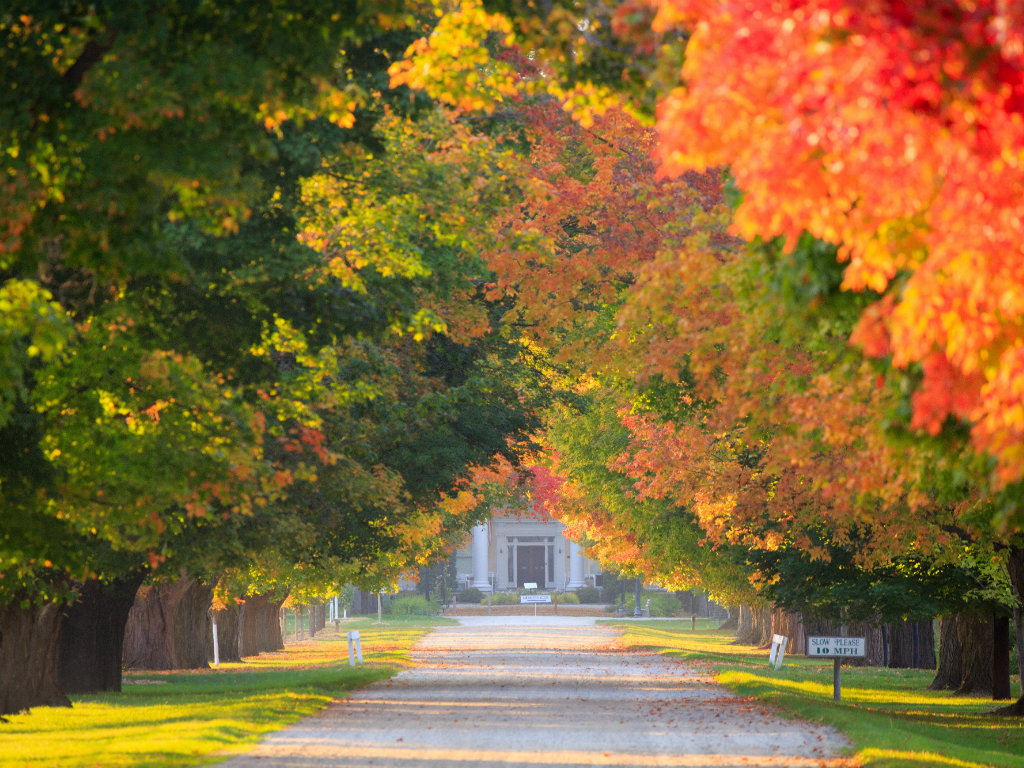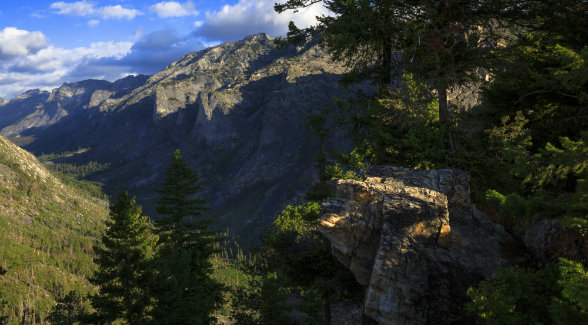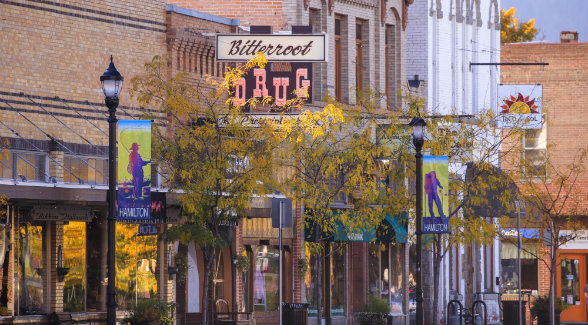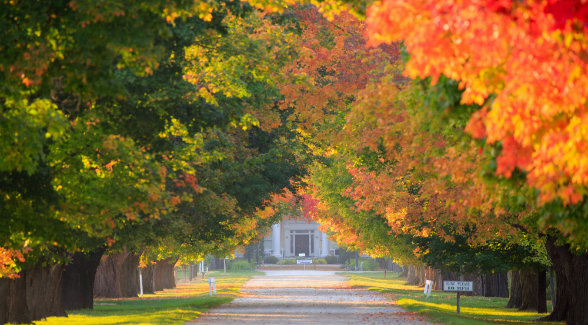Small Towns Are Dying Everywhere But Here
Small Towns Are Dying Everywhere But Here

SmallTowns_01fi
In almost every region of the country, tiny towns and small bergs are drying up and blowing away. The lone exception? Out West. Let’s start with Hamilton, Montana.
BY DAVID LYNCH
Photography by Jason Savage
As small towns elsewhere saw prosperity pass them by in favor of the big cities, something unusual happened in Hamilton, a rural hamlet tucked in Montana’s Bitterroot Valley: It flourished. Two local boys came home from college and launched a microbrewery that takes in more than $1 million in annual sales. Retirees arrived in droves, drawn by affordable land and recreation opportunities in the area’s snow-frosted mountains and trout-filled streams. And the federal government’s Rocky Mountain Laboratories opened a state-of-the-art biosafety facility to investigate the deadliest viral diseases, including Ebola.
As US economic growth in the past decade assumed an increasingly urban character, that diverse set of strengths enabled this town to defy a pervasive narrative of rural decline. Hamilton’s population of 4,728 is up more than 10 percent since 2010, reflecting a Western renaissance that contrasts with the experience of small towns in other regions.
“It’s a pretty sweet spot to be in,” said economist Ray Rasker, of Headwaters Economics in Bozeman.
“You can have the same job you’d have in Seattle and go fly-fishing in the afternoon. It’s the quality of life. It attracts talent. Pretty soon, talent builds on itself, and word gets out.”

PROVEN DRAW | People are more likely to move
to counties with outdoor activities, according to
a study by Headwaters Economics.
All of that makes Hamilton representative of a little-noticed trend. Western towns with fewer than 5,000 residents grew by an average of nearly 8 percent from 2010 to 2017, according to the Census Bureau, while similar-sized communities in the Northeast and Midwest shrank. Those in the South grew barely 1 percent.
“It is striking,” said Mark Muro, senior fellow at the Brookings Institution. “Rural towns are doing better in the West. Smaller towns are doing better in the West.”
Yet Hamilton offers no obvious formula for success that could be transplanted to the half-empty rural communities that have yet to fully recover from the Great Recession. Other communities could emphasize educating their workforce. But some advantages, including a largely recession-proof federal facility and stunning natural surroundings, aren’t available everywhere. Hamilton’s endurance, instead, only highlights the challenges confronting the nation’s endangered small towns.
“Most places are on the wrong side of huge global and technological trends,” said Muro, who is policy director for the Metropolitan Policy Program at Brookings.
Hamilton got its start in the 19th century, thanks to Marcus Daly, an Irish copper baron who sought a summer home for his family and a reliable supply of lumber for his business.
Today, the big sawmills are mostly gone. The picturesque Main Street, bracketed by mountain views, is lined by two-story brick retailers. Nearly all the residents are white and conservative.
In surrounding Ravalli County, Donald Trump beat Hillary Clinton 66 percent to 28 percent. Although some affluent retirees have arrived in recent years, this is not a wealthy rural enclave like Aspen or Jackson Hole. Hamilton’s median household income is $30,000 annually, well below the state’s $50,000 figure, though the gap is significantly narrower for married couples.
Among those joining the Hamilton influx were childhood friends Fenn Nelson and Jasper Miller, both 31, who returned here to open a brewery and restaurant after graduating from the University of Montana in Missoula.
With a business degree, Nelson took charge of the books, while Miller put his microbiology diploma to use keeping the brewery in working order.
Employing used equipment, they leased a former natural foods emporium and converted it into Higherground Brewing. Inside the low-slung building, the decor is spare: a checkerboard tile floor, stools and a few tables. On a recent night, a dozen customers watched a college basketball game on a television above the bar. One of two breweries in town, Higherground posted $1 million in sales in its sixth year of operations and has been profitable for the past “two to three years,” Nelson said. About 40 percent of its output is sold elsewhere in the state.

They had considered locations in Idaho and California, but the men said the advantages of coming home were clear. A local banker, who had known them for years, approved a $162,000 loan that got them started. Miller’s recently retired father pitched in on several projects, providing free labor that would not have been available if they had launched elsewhere.
Located an hour south of Missoula, a city of roughly 75,000 with an international airport, a major state university, and a Walmart, Hamilton “is in a great Goldilocks zone,” Miller said. “It’s really accessible.”
Hamilton’s relative out-performance — and that of Western towns, in general — comes amid the urbanization of American economic growth. Globalization and technology deeply eroded small towns’ traditional manufacturing role while placing a premium on the skills of the educated digerati in the nation’s largest cities.
The West has navigated these shifting economic tides better than other parts of the country. Since 2010, it has been by far the fastest-growing region in the country, according to the Census Bureau, expanding output two-thirds faster than the Midwest and more than twice as fast as the Northeast.
Based on measures of new business formation, migration and job churn, Western states are significantly more dynamic than those in the East, said John Lettieri, CEO of the Economic Innovation Group, a Washington think tank.
“These are newer economies. They have fewer concrete cinder blocks to drag around behind them as they’re trying to grow,” he said. “There’s an unmistakable East-West divide.”
In much of the country, small towns were poorly equipped to capitalize on the new economy of globalized supply chains and high-tech services jobs. But Western towns such as Hamilton were never heavily dependent upon manufacturing. Lacking big factories that could be hollowed out by competition from China or automation, they escaped the job losses that went with them.
Hamilton is home to a Glaxo SmithKline plant that produces a vaccine ingredient, but the town’s manufacturing workforce as a share of total employment is one-third smaller than the national average, according to the Census Bureau.
In manufacturing-dependent communities, many workers abandoned school before getting a college degree, because good-paying jobs were available without one. Hamilton’s federal lab, which employs about 450, is a continuing reminder of the value of education. The lab’s 36-acre site has its roots in the late 19th century, when lumberjacks returned from the nearby woods with an unusual illness known as “the black measles.” State officials established a modest outpost, which the federal government purchased in 1932, to investigate what was later identified as Rocky Mountain spotted fever.
Inside today’s facility, some of the world’s top scientists investigate nature’s toughest challenges, scrutinizing tissue samples with sophisticated electron microscopes and conducting Ebola experiments while wearing full-body biosafety suits. Among those who work here is the researcher who led development of the first Ebola vaccine, which was deployed in the West African outbreak several years ago.

Cathryn Haigh, 39, a specialist in rare neurodegenerative diseases, accepted a position at the lab in 2017, moving here from Melbourne, Australia. She grows “mini-brains” from stem cells, which allows her to study maladies such as Creutzfeldt-Jakob disease, a fatal degenerative brain disorder.
“I felt Melbourne was just a very anonymous city,” said Haigh, who was raised in a village of 3,000 people in Southwest England. “You were very much lost as just another random person in a crowd. One of the things I love here is the sense of community, the human connection.”
People have remarked on the Bitterroot Valley’s natural beauty since 1805, when explorers Lewis and Clark passed through on their way to the Pacific Ocean. Hamilton abuts one of the largest wilderness areas in the country, home to hiking, skiing and fly-fishing, and enjoys a mild climate that has earned the valley the sobriquet “Montana’s banana belt.”
The outdoors is more than a scenic backdrop — it’s a pillar of the local economy. Chuck Stranahan, a veteran fishing guide who put himself through college tying flies for a retailer, owns a fishing shop near Main Street. The former California school administrator sells hand-tied flies and charges $500 a day to guide anglers along the Bitterroot River or one of 13 nearby creeks.
The recreation industry plays an outsized role in determining the fate of places like Hamilton. In recent years, the recovery of a once-endangered fish, the west slope cutthroat trout, helped spur a surge in outdoor tourism.
Some who come here as tourists later stay for good. Bloom, associate director of the federal lab, says Hamilton’s surroundings make recruiting top talent easy. Nationwide, since the recession’s end, people have been more likely to move to counties with outdoor activities than those without them, according to a study by Headwaters Economics. “Recreation may make the difference between gaining or losing population, particularly in rural counties,” the study found.
At city hall, Mayor Dominic Farrenkopf, 40, seeks to balance growth and Hamilton’s small town appeal. As evidence of the latter, he notes that he and his wife, Hannah, were born in the same hospital, delivered by the same obstetrician and nurse. He’s pushing the city council to approve plans to attract light industry to an economic development district near the Ravalli County Airport, while navigating anti-growth sentiments.
The mayor, who moved back in 2001 after four years in the US Coast Guard, acknowledges that some of his neighbors “don’t want things to change” but says he is optimistic about striking the proper balance.
“I don’t see a massive expansion of population. I see a nice steady growth,” Farrenkopf said. “I wouldn’t mind adding another 1,000 people to the city.”
But some voices have been raised against unbridled growth. A few years ago, talk of a possible Walmart superstore sparked opposition from residents concerned about potential traffic and the impact on local retailers. A group of homeowners last year sued the FAA over its approval of a proposed runway extension at the airport, a case that remains on appeal.

MONTANA’S BITTERROOT VALLEY | A Western renaissance has propelled the population of Hamilton by more than 10 percent over the last decade.
Mark Jergens, 71, who relocated to Hamilton after tiring of big cities such as Houston, Los Angeles and Seattle, says most people here “don’t want to ‘Californicate’ the place.” But gesturing at the traffic moving through town on a recent weekday, Jergens notes that the steady flow once was seen only during peak summer months.
The former emergency room physician, who now advises doctors facing malpractice lawsuits, has seen one small community ruined by too much of a good thing. Years ago, he and his wife, Mimi, lived in Gig Harbor, Washington. Today, that once-quaint waterfront town northwest of Tacoma has almost tripled its 1990 size.
“I think that’s what eventually will happen here,” Jergens said ruefully. “More people will come.”
© 2019 The Washington Post. All rights reserved. Used under license.





